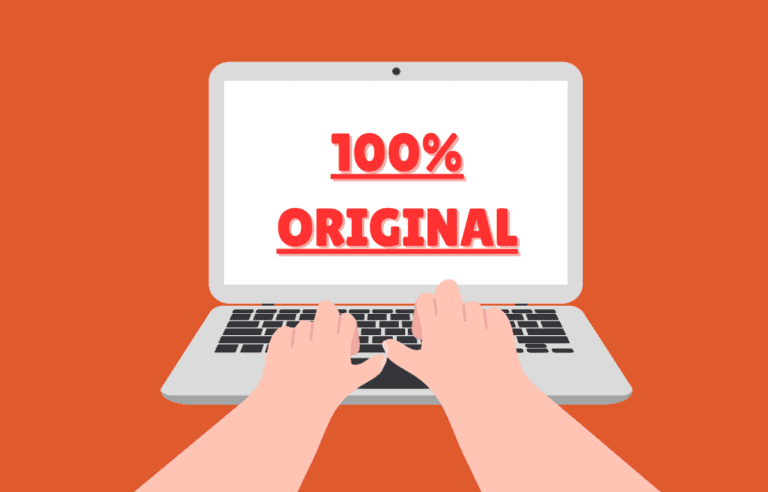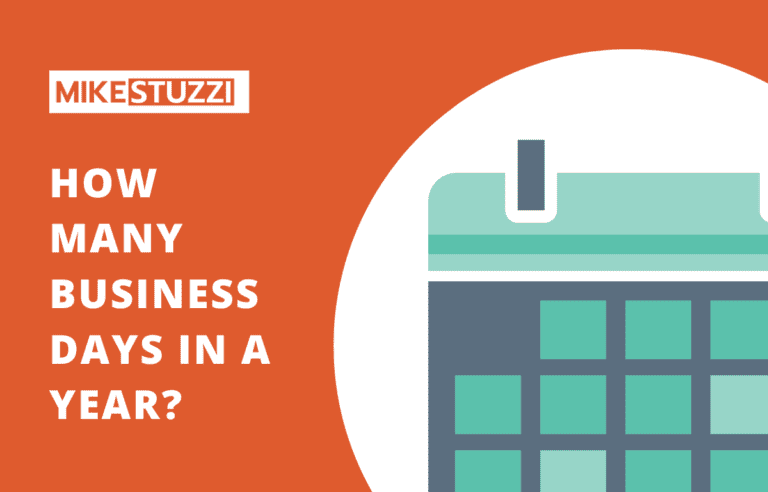ما هو تحسين محركات البحث؟ دليل للمبتدئين
In the vast and crowded Internet, it’s possible to have a website or online business with immense potential, but it’s buried deep from reach. Without a clear path to your website, your target audience won’t readily find you. This is where SEO (Search Engine Optimization) comes into play.
It’s a powerful tool that can help your site rank higher on search engine results pages (SERPs) and make it easier for your targeted readers and customers to locate you.
However, SEO is more than just a marketing strategy. It involves understanding the perplexing search engine algorithms, conducting research on keywords, optimizing website content, and establishing quality links, among other things.
In the present digital world, SEO is an indispensable skill for any online business owner or marketer who desires to enhance their online visibility and obtain organic web traffic. In this article, we’ll delve into what SEO is, its components, benefits, and more information.
إقرأ أيضاً: أفضل أدوات أتمتة SEO
Definition of SEO
SEO (Search Engine Optimization) refers to a series of practices that are aimed at improving the appearance and ranking of a website or web page on search engine results pages (SERPs). The SEO process entails applying some changes to a website’s content and structure to make it more appealing and relevant to search engines such as Google, Bing, and Yahoo. The objective of SEO is to boost organic traffic to a site from search engines and enhance its overall online presence.
Some of the techniques in SEO include on-page optimization such as keyword research, content optimization, and metadata optimization, as well as off-page optimization such as link building and social media marketing. Implementing an effective SEO strategy allows you as a business or website owner to achieve higher visibility, acquire more traffic, and generate more leads and revenue.
Components of SEO
SEO comes in three primary types: on-page SEO, off-page SEO, and technical SEO.
On-page SEO
On-page SEO refers to the optimization techniques that you apply directly to the website’s content and structure to enhance its visibility on search results.
1. البحث عن الكلمات الرئيسية
البحث عن الكلمه الرئيسيه is a critical component of on-page SEO. It’s the process of identifying and analyzing the words and phrases that people use when searching for information online. It’s through keyword research that you understand your audience’s needs and behavior, and optimize your content as required.
However, successful keyword research is not just about identifying high-traffic keywords. It requires analyzing search volume, competition, and user intent to pinpoint the most valuable keywords that can drive targeted traffic to your website. This means putting yourself in your audience’s shoes and understanding their pain points, needs, and interests.
Note that keyword research is an ongoing process, not a one-time event. As search trends and user behavior change, so do the keywords that people use to find information online. Therefore, regularly reviewing and updating your keyword strategy is vital to staying ahead of the competition and keeping your content optimized and relevant for search engines.
2. Title Tags
If you want your web page to rank higher on search results, a well-crafted title tag goes a long way. Title tags are a critical element of on-page SEO that are found in the head section of a web page. They provide a concise and informative description of the page’s content and purpose, making it easier for both search engines and users to understand what your page is about.
Displayed as the clickable headline in search engine results pages, title tags can have a significant impact on your website’s click-through rate (CTR) and search engine rankings. To make the most of them, it’s important that you craft well-written tags that accurately describe the content and incorporate a few relevant keywords. Keep your title tags between 50-60 characters in length to ensure they don’t get cut short in search results.
Beyond improving CTRs, title tags also play a crucial role in search engine ranking. Search engines consider title tags when determining a web page’s relevance and importance for a particular keyword search. As such, optimizing your title tags with primary and secondary keywords is essential to enjoy better search engine rankings and increased traffic.
It’s important to note that title tags should be written with humans in mind first and search engines second. By crafting a well-written and optimized title tag, users can quickly identify the content they’re looking for, increasing their engagement with your website.
3. Meta Descriptions
Moving on to meta descriptions, they provide a brief summary of a web page’s content that’s shown below title tags on search engine results pages. While not a direct ranking factor, meta descriptions can significantly impact your site’s click-through and engagement rates.
To create an effective meta description, it’s best to keep it between 150-160 characters in length and provide an accurate and compelling summary of the page’s content. Including a few relevant keywords can also help users understand what to expect when they click through.
Remember, search engines like Google may display alternative descriptions based on their algorithms. Still, crafting a unique and optimized meta description still offers a chance for it to appear in searches. So, it’s crucial not to neglect this crucial element of on-page SEO.
عديد أدوات الذكاء الاصطناعي لتحسين محركات البحث can help you do things like finding keywords and optimizing your titles and meta descriptions.
4. الروابط الداخلية والخارجية
Internal and external links are other important components of on-page SEO that can influence search rankings and user experience.
The internal links help readers navigate between different sections of your website and encourage them to spend more time browsing it. Your internal links also are what help search engines crawl and index your site pages more effectively. When choosing anchor text for internal links, it would be best to use words or phrase that accurately reflects the content of the linked pages.
External links, on the other hand, connect a website to another external website and provide additional resources and information to the audience. It’s through external links that you can also establish your website’s credibility.
To search engines, external links indicate that your website is part of a larger network of related content. When you’re linking out, only link to reputable and high-quality external sources that provide additional value to users on your site.
Remember, your internal and external links should be highly relevant and likely to be of interest to your readers. Use links to connect pages that are related and provide more information. Also, avoid overusing links as it can negatively impact user experience and make your site look spammy.
5. Image Optimization
Image optimization is another essential aspect of on-page SEO that involves optimizing various aspects of images, such as file size, format, alt text, and file names. This works to improve user experience, reduce page load times, and improve your search engine ranking.
One of the key things to do when it comes to image optimization is to reduce the file size of images. Large image files can significantly slow down page load times and affect the experience of your site visitors. Therefore, it would be best if you compress your images and reduce their file size in a way that doesn’t kill the quality. You can achieve this using various tools and techniques, such as image compression software or plugins, changing the image file format, or reducing the dimensions of the image.
Another thing to consider in image optimization is the alt text and file names of images. An alt text describes your image and also improves accessibility for visually impaired users.
Search engines also use this text to understand the content of the image and improve its ranking on search results. This is why you have to add an alt text to each image on your website and also ensure that the file names accurately describe your images. Doing so makes it easier for search engines to understand what the image is about.
The images you include in your content should always be related to the text in some way. Also, ensure they can be displayed on different devices and screen sizes without problems.
6. Content Optimization
تحسين المحتوى is all about improving the quality, relevance, and visibility of a website’s content to attract more traffic, engage users, and achieve your online goals. It involves optimizing various on-page elements, such as headings, images, internal links, and the content itself, to improve its ranking on search engine results pages (SERPs).
It all begins with creating high-quality and valuable content that provides a unique perspective or solution to the user’s query. If your content is informative, engaging, and clearly answers someone’s queries, more people are likely to engage with it. This would indicate to Google that more people find it useful, making it appear higher on searches.
One thing to consider when optimizing your content is its length. You don’t necessarily need to make your post the longest one available for a particular search query. Instead, strive to cover all important topics in it.
Also, structure your content in a way that improves its readability and user engagement. Use appropriate header tags to organize the text into logical sections, add relevant images and videos, and links to other relevant pages on your site or other sources. Be sure to consider some tools for optimizing content that enable you to work faster.
Off-Page SEO
Off-page SEO refers to the techniques and strategies used to improve a website’s visibility and reputation outside of its own domain.
7. Link Building
Link building means acquiring high-quality links from other websites to your own website. This is an essential aspect of off-page SEO that boosts your website’s authority and trustworthiness in the eyes of search engines.
Here are some effective ways to build links to your site:
- Guest blogging: This involves writing high-quality content for other websites in exchange for a link back to your site. The link can either appear in the content or in other cases, in your author bio as a guest contributor.
- Broken link building: This is where you find broken links on specific websites and offer to replace them with links to your site. It’s a win-win situation as you help the website owner fix broken links while also getting good backlinks to your own website.
- Skyscraper technique: The skyscraper technique involves creating high-quality and valuable content that’s better than what currently exists and then asking websites that have linked to similar content to link to yours instead.
- Infographics: Infographics can be great for attracting links from other websites in your industry. What you do is create informative and visually appealing infographics that can be reposted and linked to by other websites that find them useful.
- وسائل التواصل الاجتماعي: Social media platforms serve to help you promote your content and possibly attract links from other websites. Websites that want to share your content with their followers can link to you in their related posts.
- Testimonials: Providing testimonials to other businesses can help you build relationships and attract links back to your website. The testimonial can be about a product or service you used and had good experiences with.
8. Social Media Marketing
Social media marketing is a powerful tool that can be used as part of off-page SEO to improve a website’s reputation and online visibility. Leveraging the power of social media platforms allows your businesses to increase reach and attract new customers.
Social media marketing allows businesses to build relationships with their audience and establish themselves as thought leaders in their industry. Creating valuable content and engaging with your followers is how you can quickly build brand loyalty.
Another benefit of social media marketing is that it can help to drive traffic to your website. You simply share your posts on a few social networks that work for you explaining to potential readers what they’ll gain from clicking to read them.
Technical SEO
Technical SEO refers to the optimization of a website’s technical elements. While on-page and off-page SEO focus on content and links, technical SEO focuses on the technical aspects of a website, such as its structure, code, and server configuration.
Below are some key elements of technical SEO:
- Website speed and performance: If someone finds a website, clicks on it, and it takes ages for it to load, they’ll likely click back to find a different one. This is why websites that load quickly and have a high-performance score tend to rank higher in search engine results.
- Mobile responsiveness: With more people using mobile devices to access the internet, having a mobile-responsive site is crucial in SEO. A mobile-responsive website adjusts its layout and content to fit the screen size of the device being used.
- Site architecture: How you structure and organize your website can impact its search engine rankings. A site with a non-complex and clear site structure makes it easier for search engines to crawl and index.
- Site security: Search engines prioritize websites that use HTTPS encryption and have a secure SSL certificate. The reason is that there’s a need to protect the privacy and data of users.
- XML sitemap: A sitemap is a file that lists all the pages and other files on a website and how they relate to each other. You need to submit an XML sitemap of your site to Google. It helps the search engine crawl and index the website more efficiently.
Keep in mind that technical SEO requires you to have some level of technical expertise. However, there are many resources available to help you optimize such aspects of your websites to better suit search results.
They include YouTube, guides, and other SEO-based المنتجات الرقمية. Another idea would be to hire an expert for the job.
Benefits of SEO
Search engine optimization provides a wide range of benefits for businesses of all sizes. Some of the top benefits of SEO are:
- Higher website visibility: Optimizing your website for search engines means an improvement in your visibility and more organic traffic. It increases your brand awareness and helps you attract new readers and customers.
- Better user experience: Because SEO involves adjusting your website’s design and content, users will have a better experience with it. This can easily improve your website’s engagement and conversion rates.
- Improved credibility: Ranking higher in search engine results shows how credible your business is. The result is enhanced trust and customer loyalty.
- Higher ROI: SEO is a cost-effective marketing strategy that can provide a high return on investment. You’ll be attracting more organic traffic, converting more leads, and increasing your profitability without paying ridiculous prices.
- Long-term results: Unlike other marketing strategies that provide short-term results, SEO provides long-term benefits. SEO techniques you implement today can continue to drive traffic to your website over the next many months and years.
- Competitive advantage: Businesses ranking higher in search engine results businesses have a competitive advantage over their competitors. This can help to attract more customers and establish a stronger brand presence in the market.
أفضل ممارسات تحسين محركات البحث
You need to follow a few أفضل الممارسات لتحسين محركات البحث to experience long-term benefits and avoid the risk of getting penalized. I’ll list some of them below:
- Practice white hat SEO: White hat SEO refers to ethical and legitimate optimization techniques that comply with Google guidelines. Focus on proper SEO practices like creating quality content, building high-quality backlinks, and improving website speed and performance.
- Avoid black hat SEO: Black hat SEO means unethical and illegitimate optimization techniques that violate search engine guidelines. Some examples are حشو الكلمات الرئيسية, cloaking, buying backlinks, and other spammy practices. While you may get instant good results from such practices, you also risk receiving penalties. You could even be banned from search engine results when found.
- Keep up with algorithm updates: Search engines like Google regularly update their algorithms. This practice serves to provide users with more accurate and relevant search results. Major sites in the SEO space like مجلة محرك البحث also publish frequent updates that you can follow along.
- Regularly analyze and adjust your strategies: SEO is an ongoing process that requires regular analysis and adjustment. You should regularly monitor your website’s traffic, engagement, and search engine rankings. From there, you adjust your SEO strategies as needed based on your findings.
خاتمة
SEO is an essential digital marketing practice that can help you attract more organic traffic, improve your search engine rankings, and boost your business’s online presence. Just follow best practices such as on-page and off-page SEO to be on the right side of Google guidelines for webmasters.
Always remember that SEO is an ongoing process that requires continuous effort. The search engine landscape is constantly evolving, and you need to stay up-to-date on the latest trends and best practices to remain competitive. By investing in proper SEO strategies, you can acquire more leads, increase conversions, and achieve your marketing goals in this digital age.
You can check out the latest SEO stats for more insights!







